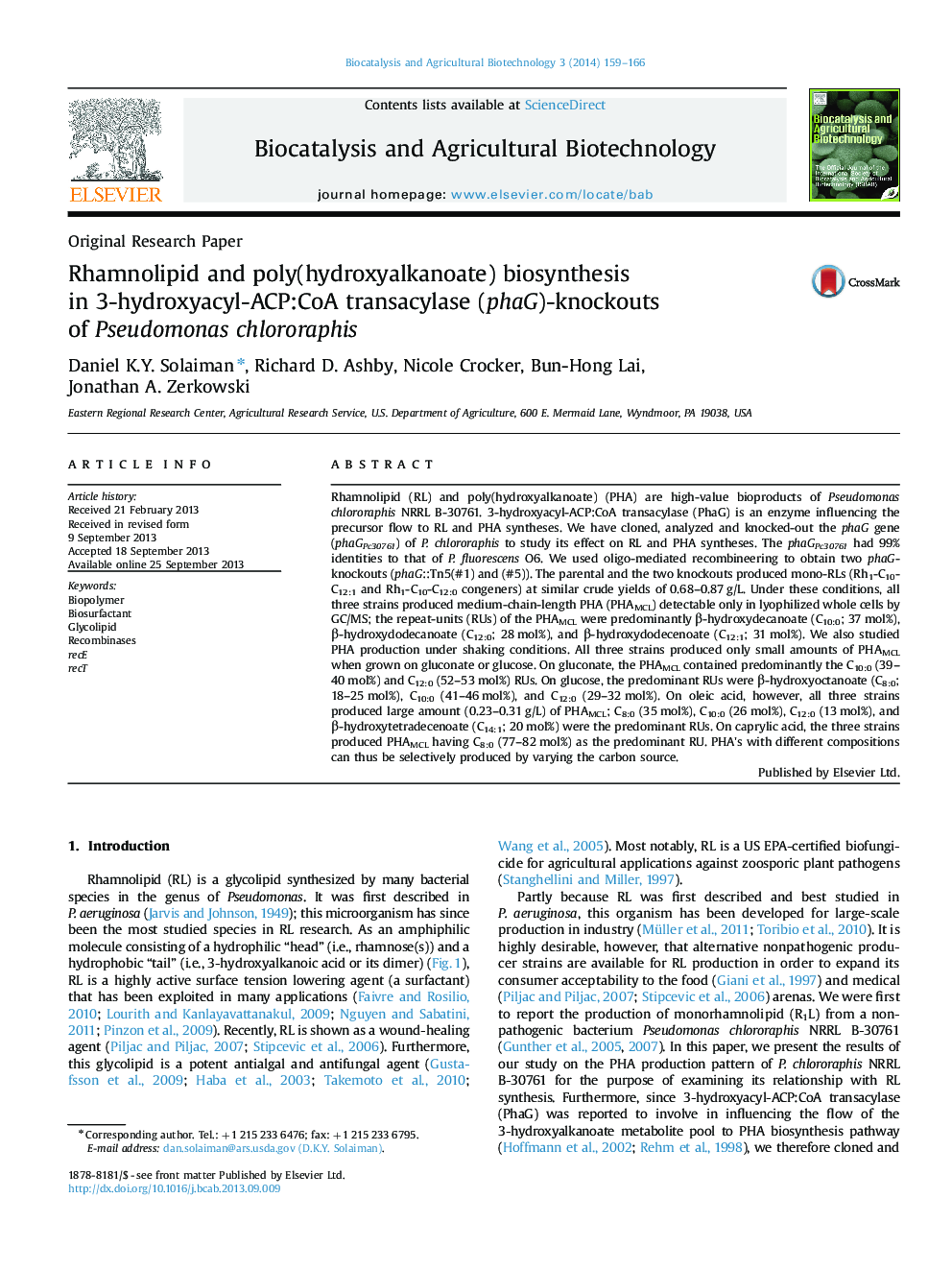| کد مقاله | کد نشریه | سال انتشار | مقاله انگلیسی | نسخه تمام متن |
|---|---|---|---|---|
| 2075502 | 1079337 | 2014 | 8 صفحه PDF | دانلود رایگان |

Rhamnolipid (RL) and poly(hydroxyalkanoate) (PHA) are high-value bioproducts of Pseudomonas chlororaphis NRRL B-30761. 3-hydroxyacyl-ACP:CoA transacylase (PhaG) is an enzyme influencing the precursor flow to RL and PHA syntheses. We have cloned, analyzed and knocked-out the phaG gene (phaGPc30761) of P. chlororaphis to study its effect on RL and PHA syntheses. The phaGPc30761 had 99% identities to that of P. fluorescens O6. We used oligo-mediated recombineering to obtain two phaG-knockouts (phaG::Tn5(#1) and (#5)). The parental and the two knockouts produced mono-RLs (Rh1-C10-C12:1 and Rh1-C10-C12:0 congeners) at similar crude yields of 0.68–0.87 g/L. Under these conditions, all three strains produced medium-chain-length PHA (PHAMCL) detectable only in lyophilized whole cells by GC/MS; the repeat-units (RUs) of the PHAMCL were predominantly β-hydroxydecanoate (C10:0; 37 mol%), β-hydroxydodecanoate (C12:0; 28 mol%), and β-hydroxydodecenoate (C12:1; 31 mol%). We also studied PHA production under shaking conditions. All three strains produced only small amounts of PHAMCL when grown on gluconate or glucose. On gluconate, the PHAMCL contained predominantly the C10:0 (39–40 mol%) and C12:0 (52–53 mol%) RUs. On glucose, the predominant RUs were β-hydroxyoctanoate (C8:0; 18–25 mol%), C10:0 (41–46 mol%), and C12:0 (29–32 mol%). On oleic acid, however, all three strains produced large amount (0.23–0.31 g/L) of PHAMCL; C8:0 (35 mol%), C10:0 (26 mol%), C12:0 (13 mol%), and β-hydroxytetradecenoate (C14:1; 20 mol%) were the predominant RUs. On caprylic acid, the three strains produced PHAMCL having C8:0 (77–82 mol%) as the predominant RU. PHA's with different compositions can thus be selectively produced by varying the carbon source.
Journal: Biocatalysis and Agricultural Biotechnology - Volume 3, Issue 2, April 2014, Pages 159–166